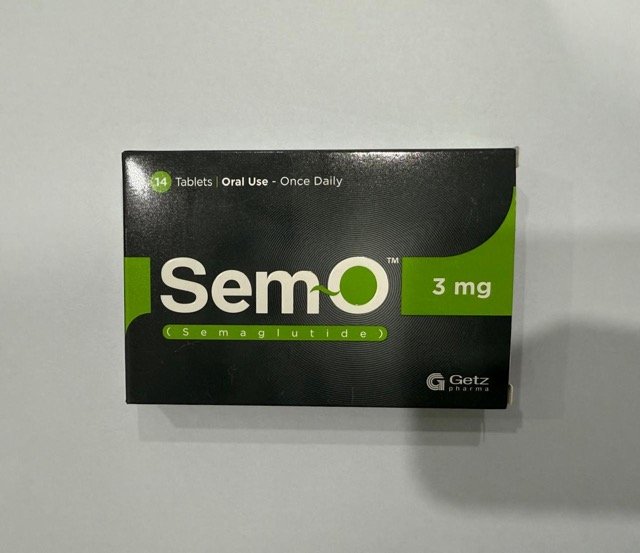Pramlintide (Symlin) is a parenteral medicine (available as a subQ injection) used in the management of hyperglycemia in type 1 and type 2 diabetes mellitus in combination with insulin or other drugs.
Pramlintide Uses (indications):
-
Diabetes mellitus (Type 1 and Type 2):
- It is used as an adjunct treatment in patients with diabetes mellitus Type 1 or Type 2 who fail to achieve their desired post-prandial glucose targets despite optimal insulin therapy.
Pramlintide Dose in Adults
Note:
- Reduce premeal insulin dose by 50% when initiating Pramlintide treatment to avoid hypoglycemia.
- Re-initiation of treatment should be done following the same initial titration protocol.
- In case a dose is missed, do not administer an extra dose, wait for the next scheduled dose (do not increase the dose)
Pramlintide Dose in the treatment of type 1 Diabetes mellitus:
-
SubQ injection:
- 15 mcg right before a substantial meal initially
- To reach the desired amount of 30 to 60 mcg before a substantial meal, increase the dose by 15 mcg every three days (if significant nausea does not occur)
- The treatment may be discontinued if significant nausea occurs with the 30 mcg dose.
Pramlintide Dose in the treatment of type 2 Diabetes mellitus:
- SubQ:
- 60 mcg immediately before the major meal initially
- Increase the dose to 120 mcg before each major meal after three days if no significant nausea occurs
- Reduce the dose to 60 mcg, if significant nausea occurs at a dose of 120 mcg.
Use in children:
Not recommended.
Pregnancy Risk Factor C
- Although it has a low chance of crossing the placental barrier (although adverse fetal outcomes were observed in animal reproduction studies),
- Congenital malformations in pregnancy can lead to diabetes and other adverse effects for both the mother and the baby.
- The mother's blood sugar levels should not be elevated and should remain within normal limits.
- Insulin is the best treatment for diabetic mothers. Diabetes should not be treated during pregnancy with Pramlintide alone.
Use of pramlintide during breastfeeding
- It is unknown if the drug will be excreted into breastmilk.
- Manufacturers recommend that lactating mothers weigh the benefits and risks of the drug.
Pramlintide Dose in Kidney disease:
-
CrCl >=15 ml/minute
- It is not necessary to adjust the dose.
-
End-stage renal disease (ESRD):
- The manufacturer has not suggested any changes to the dosage.
Pramlintide Dose in Liver disease:
The manufacturer has not suggested any changes in the dose (it was not studied in patients suffering from liver disease). Dose adjustment is not necessary, however, as it is metabolized in the kidneys.
Common Side Effects of Pramlintide:
-
Central Nervous System:
- Headache
-
Endocrine & Metabolic:
- Severe Hypoglycemia
-
Gastrointestinal:
- Nausea
- Anorexia
- Vomiting
-
Miscellaneous:
- Accidental Injury
Less Common Side Effects Of Pramlintide:
-
Central Nervous System:
- Fatigue
- Dizziness
-
Endocrine & Metabolic:
- Severe Hypoglycemia
-
Gastrointestinal:
- Abdominal Pain
-
Hypersensitivity:
- Hypersensitivity Reaction
-
Neuromuscular & Skeletal:
- Arthralgia
-
Respiratory:
- Cough
- Pharyngitis
Contraindications to Pramlintide:
- Any component of the drug or formulation can cause serious allergic reactions.
- Patients suffering from gastroparesis diagnosed
- Hypoglycemic unawareness:
Warnings and precautions
-
Allergy reactions:
- It is possible to experience allergic reactions at the injection site. Redness, itching and swelling can all be signs of allergic reactions.
- Most allergic symptoms disappear within days or weeks.
-
Bariatric surgery
- Hypoglycemia:
- Following a gastric bypass, gastric band, or sleeve gastroplasty, hypoglycemia is possible.
- Avoid hypoglycemia after bariatric surgery by choosing a drug that has the lowest hypoglycemic potential.
- Insulin sensitivity and secretion can be partially recovered following bariatric surgery. The most effective procedure is the gastric bypass, which is followed by a gastric sleeve or band ligation.
- The surgery may result in an improvement in insulin sensitivity over 3 to 12 months. However, improvements in liver sensitivity and first-phase insulin secretion can be seen immediately following gastric bypass or sleeve-gastrectomy.
- Hypoglycemia:
-
Gastroparesis
- Patients with gastric emptying conditions should not use it.
- It shouldn't be taken with anticholinergic medications, which can cause gastric emptying to be impaired.
Pramlintide: Drug Interaction
|
Alpha-Lipoic Acid |
May enhance the hypoglycemic effect of Antidiabetic Agents. |
|
Androgens |
May enhance the hypoglycemic effect of Blood Glucose Lowering Agents. Exceptions: Danazol. |
|
Direct Acting Antiviral Agents (HCV) |
May enhance the hypoglycemic effect of Antidiabetic Agents. |
|
Guanethidine |
May enhance the hypoglycemic effect of Antidiabetic Agents. |
|
Hyperglycemia-Associated Agents |
May diminish the therapeutic effect of Antidiabetic Agents. |
|
Hypoglycemia-Associated Agents |
Antidiabetic Agents may enhance the hypoglycemic effect of Hypoglycemia-Associated Agents. |
|
Maitake |
May enhance the hypoglycemic effect of Blood Glucose Lowering Agents. |
|
Monoamine Oxidase Inhibitors |
May enhance the hypoglycemic effect of Blood Glucose Lowering Agents. |
|
Pegvisomant |
May enhance the hypoglycemic effect of Blood Glucose Lowering Agents. |
|
Prothionamide |
May enhance the hypoglycemic effect of Blood Glucose Lowering Agents. |
|
Quinolones |
May enhance the hypoglycemic effect of Blood Glucose Lowering Agents. Quinolones may diminish the therapeutic effect of Blood Glucose Lowering Agents. Specifically, if an agent is being used to treat diabetes, loss of blood sugar control may occur with quinolone use. |
|
Ritodrine |
May diminish the therapeutic effect of Antidiabetic Agents. |
|
Salicylates |
May enhance the hypoglycemic effect of Blood Glucose Lowering Agents. |
|
Selective Serotonin Reuptake Inhibitors |
May enhance the hypoglycemic effect of Blood Glucose Lowering Agents. |
|
Thiazide and Thiazide-Like Diuretics |
May diminish the therapeutic effect of Antidiabetic Agents. |
|
Anticholinergic Agents |
The anticholinergic effect of anticholinergic agents may be strengthened by pramlintide. The GI tract alone is the target of these effects. |
|
Insulins |
Pramlintide may make insulin's hypoglycemia action more potent. Management: To lower the risk of hypoglycemia after starting pramlintide, reduce the dose of insulin taken during meals by 50%. Regularly check your blood sugar levels and tailor additional insulin dose modifications based on your glycemic control. |
Monitoring parameters:
- Before you start the treatment:
- Glycated hemoglobin
- Body weight
- Glycemic record
- Before and after treatment, monitor blood glucose
- Patients with good glycemic control have their hemoglobin glycated twice annually, while patients who don't achieve their glycemic goals three times a month get their hemoglobin glycated once a year.
- Monitor hypoglycemia's clinical signs.
How to administer Pramlintide?
- SubQ injections are administered in the same way as insulin to the abdomen or anterior legs.
- Variable absorption should be avoided when administering it to the arms.
- Rotating injection sites is a good idea. It should not be combined with insulin, and should be administered at locations distinct from the insulin injection site.
- Allow the solution to cool before you administer the dose. This will reduce the risk of injection site reactions.
- Preparation of oral medications that require rapid absorption or action should begin one hour prior to or two hours following administration of pramlintide.
Mechanism of action of Pramlintide:
- It is a synthetic analog to endogenous amylin, which is secreted by beta cells of your pancreas in conjunction with insulin.
- The following mechanisms result in a decrease in post-prandial glucose:
- It prolongs the time it takes for your gastric emptying to complete.
- Reduces post-prandial secretion glucagon
- Through its action on the brain's appetite center, it suppresses appetite and caloric intake.
Duration:
- about 3 hours
Protein binding:
- about 60%
Metabolism:
- It is metabolized primarily by the kidneys to des-lys pramlintide (active metabolite)
Bioavailability:
- ~30% to 40%
Half-life elimination:
- ~48 minutes
Time to peak plasma concentration:
- 20 minutes
Excretion:
- Primarily urine
International Brands of Pramlintide:
- Symlin Pen 120
- Symlin Pen 60
Pramlintide Brand Names in Pakistan:
No Brands Available in Pakistan.



.jpeg)



